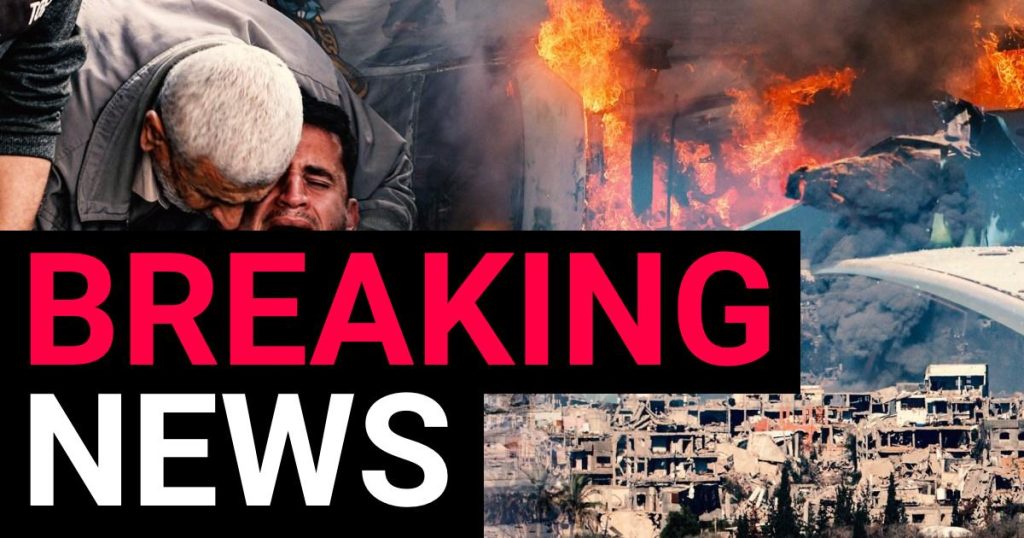Paragraph 1: The Dawn of a Fragile Truce
After 466 days of relentless conflict, a glimmer of hope emerged from the war-torn Gaza Strip. Israel and Hamas, locked in a bitter struggle, agreed to a ceasefire, mediated by Arab and US envoys, including representatives from both the outgoing Biden and former Trump administrations. The deal, while yet to be formally announced by either side, aims to halt Israeli attacks and secure the release of numerous hostages held captive in Gaza. This breakthrough followed intense negotiations and comes after several previous attempts at securing a truce had faltered. The fragility of the situation is underscored by Israel’s continued strikes on the Jenin Camp in the West Bank, even as the ceasefire framework was being finalized.
Paragraph 2: The Hostage Release: A Two-Stage Process
The ceasefire agreement incorporates a two-stage process for the release of hostages held by Hamas. The initial phase, spanning 60 days, involves the liberation of 33 individuals, comprising children, women (including female soldiers), men over 50, and those wounded or ill. While Israel believes these individuals are alive, official confirmation from Hamas is pending. If this first stage proceeds smoothly, negotiations for the second phase will commence on the 16th day following the agreement’s implementation. This second stage focuses on the release of the remaining living hostages, primarily male soldiers and younger civilian men, and the return of the bodies of deceased hostages.
Paragraph 3: The Price of Freedom: A Prisoner Exchange
In exchange for the return of its citizens, Israel has agreed to release over 1,000 Palestinian prisoners, many held for years, often without due process. This concession represents a significant step towards resolving the humanitarian crisis and addressing concerns about the prolonged detention of Palestinians. However, a crucial caveat to this exchange is the exclusion of Hamas fighters who participated in the October 7, 2023 attack on Israel. This stipulation underscores the complex political landscape and the delicate balance sought in the ceasefire agreement.
Paragraph 4: The Phased Withdrawal and Security Arrangements
The ceasefire agreement outlines a phased withdrawal of Israeli troops from Gaza. While a complete withdrawal is not immediate, Israeli forces will remain within a border perimeter to protect Israeli towns and villages. Crucially, security arrangements will be implemented along the Philadelphi corridor, bordering Egypt, to maintain control and prevent the movement of weapons. Unarmed residents of North Gaza will be permitted to return, with mechanisms in place to ensure no weapons are brought into the area. The agreement also stipulates the withdrawal of Israeli soldiers from the Netzarim corridor in central Gaza, further easing tensions and facilitating movement.
Paragraph 5: Humanitarian Aid and the Rafah Crossing
A key component of the ceasefire agreement is a substantial increase in humanitarian aid to the Gaza Strip, addressing the dire humanitarian crisis faced by the population. This recognizes the urgent need for essential supplies, medical assistance, and resources to rebuild the devastated region. The Rafah crossing between Egypt and Gaza will also gradually reopen, initially allowing passage for medical evacuations and humanitarian cases. This phased approach aims to ensure controlled movement while addressing the urgent need for medical treatment and humanitarian assistance within the besieged enclave.
Paragraph 6: The Unresolved Question of Gaza’s Governance
While the ceasefire agreement addresses immediate concerns like hostage release and humanitarian aid, the complex issue of Gaza’s future governance remains unresolved. This crucial aspect has seemingly been deferred to future discussions due to its intricate nature and the potential to derail the current, limited agreement. Israel insists that it will not accept Hamas remaining in power and rejects the Palestinian Authority’s administration of Gaza. Simultaneously, Israel has maintained its intention to retain security control over the enclave after the conflict concludes. The question of who will govern Gaza remains a significant challenge, underscoring the long road ahead towards achieving lasting peace and stability in the region.











